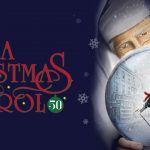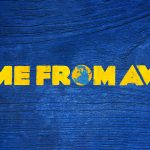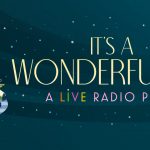Russian brass and flash
Conductor Sebastian Lang-Lessing makes an explosive MSO debut with "Russian Fireworks."
Russian composers sought avidly to sound Russian in the latter half of the 19th century. That desire led to an internal brand of exoticism, as the conservatory Russians looked to the music of their peasants, that of supposed ancient savage tribes and, in a orientalist way also in vogue in France, to the music of the eastern end of the Russian empire.
Eventually, this movement culminated in Stravinsky’s Rite of Spring, Petrouchka and Firebird, “mad Russian” ballet music just made to be the rage of Paris. But Stravinsky built on the music of the prior generations of Russian nationalists, including Glinka, Mussorgsky, Borodin and, to a lesser extent, Tchaikovsky. Guest conductor Sebastian Lang-Lessing brought a program of music by these four composers to the Milwaukee Symphony Orchestra Friday.
The cymbals, triangle, tube bells, bass drum and brasses got a special workout, and the woodwinds had lots of fun in snake charmer and Janissary modes. Jangly percussion and savage horn blasts represented the wild, feral part of the Russian soul to these composers. Tchaikovsky’s Symphony No. 2 (“Little Russian”) goes pretty far in that direction, but not nearly as far as Rimsky’s rethinking of Mussorgsky’s Night on Bald Mountain and three illustrative orchestral scenes from Mussorgsky’s opera, Khovantchina. Neither does Tchaikovsky quite match the exotic ethnic zeal Borodin infused into his familiar Polovtzian Dances from Prince Igor. Glinka, in the earlier Overture to Ruslan and Ludmilla, used a more Classical orchestra, but this music, too, has in common a palpable nationalist fervor.
That common element explains the unusual cohesion of Lang-Lessing’s program and his explosive gestures and vertical podium choreography. A conductor could make an impression with such a program, and the young German music director of the San Antonio Symphony did. With his general flamboyance and tendency to get airborne, he reminded me of Andreas Delfs. Like Delfs, Lang-Lessing is fun to watch and gets excellent musical results.
The most important among them was sustained high energy. This music should never relax, not even during Mussorgsky’s relatively quiet Dawn on the Moskva River. The orchestra gave Lang-Lessing burning edge he sought. If last week’s MSO concert was an existential Bergman film, this week’s was a wild action movie teeming with exotic villains, rampaging hordes and femmes fatales.
Rimsky, Glinka and Tchaikovsky sought to express the Russian soul, but they also wanted to show off their compositional chops. They did so with startling orchestral combinations, bold percussion, and virtuosic but realistic writing for sections and soloists. Glinka opens his Overture with massed strings in furious, vertiginous unisons. Tchaikovsky assigned big solos to every principal wind, and he barbed his symphony with his trickiest syncopations and cross-rhythms.
Lang-Lessing helped a great deal with all of this. Even airborne, he sorted it all out with a clear beat, precise cues and gestures of that aptly described the dynamic, articulation and impetus of the phrase. Thus did he see to the particulars. The larger message, sent through his whole being, was: This is brilliant music! Be brilliant!
And brilliant the MSO was.
This Russian Fireworks program, given in an Uihlein Hall that seemed unusually alive acoustically, will be repeated at 8 p.m. Saturday and 2:3o p.m. Sunday, Sept. 29-30. For tickets and more information, call the Marcus Center box office, 414 273-7206, or visit the MSO website.
Don’t miss anything! Bookmark Matthew Reddin’s comprehensive TCD Guide to the 2012-13 Season. Sponsored by the Florentine Opera.
























Can’t wait to hear the concert tonight!! Thanks, Tom.
Just for the record, we do fix typos as soon as we become aware of them. And dear readers, if you spot one, please comment. Your comment in a box such as this one triggers an email alert, and I know to fix the glitch. — Strini